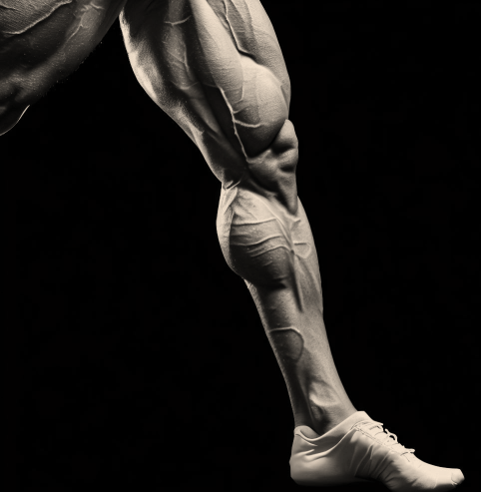In today’s modern world, the significance of maintaining a good posture has never been more imperative. But did you know that your leg muscles play a crucial role in ensuring you uphold that ideal posture? In this in-depth article, we explore the intricate relationship between leg muscles and posture, and the ripple effect it has on our overall health and wellness.
The Anatomy of Our Leg Muscles
Leg muscles, in their entirety, comprise a complex network of fibres designed to support movement and balance. Key muscles include the quadriceps, hamstrings, calves, and the smaller muscles surrounding the shins and thighs. Each muscle group has its unique function, but collectively, they work in harmony to stabilize our stance and facilitate movement.
The Role of Leg Muscles in Posture
Our leg muscles form the foundation upon which our upper body rests. Think of them as the pillars of a building. If these pillars are weak or misaligned, the building’s integrity is compromised.
- Support and Balance: The strength and endurance of leg muscles directly influence our body’s ability to stand erect and maintain balance. Weak leg muscles can lead to a slouched posture, increasing the risk of spine and back-related ailments.
- Weight Distribution: Proper weight distribution is paramount to prevent undue stress on our knees and joints. Strong leg muscles ensure that our body weight is evenly distributed, minimizing strain on specific areas.
- Pelvic Alignment: The pelvis acts as a bridge connecting our upper and lower body. The muscles surrounding our thighs and hips play a pivotal role in maintaining pelvic alignment, which in turn affects our spinal curvature.
How Weak Leg Muscles Can Distort Posture
A lack of strength or flexibility in leg muscles can lead to several postural deviations:
- Anterior Pelvic Tilt: This occurs when tight hip flexors pull the pelvis forward, causing an exaggerated curve in the lower back.
- Bow Legs: Weakness in the inner thigh muscles can lead to an outward curvature of the knees, causing a bow-legged appearance.
- Knock Knees: Conversely, when outer thigh muscles are weaker, it can cause an inward curvature of the knees.
Benefits of Strengthening Leg Muscles
Strengthening leg muscles does not just aid in improving posture but brings about a plethora of other benefits:
- Enhanced Mobility: Strong leg muscles enhance our range of motion, making daily activities more comfortable and reducing the risk of injuries.
- Reduced Fatigue: As our legs become stronger, they require less effort to support the body, leading to decreased fatigue during prolonged periods of standing or walking.
- Boosted Metabolism: Leg muscles are among the largest muscle groups in the body. Training them boosts metabolism, aiding in effective calorie burning and weight management.
Exercises to Improve Leg Muscle Strength
For those looking to bolster their leg muscles and improve posture, here are some effective exercises:
- Squats: An excellent exercise for the quadriceps, hamstrings, and glutes. Ensure proper form to maximize benefits and prevent injuries.
- Lunges: Targets the same muscle groups as squats but with an added focus on balance and stability.
- Calf Raises: Specifically strengthens the calf muscles, which play a vital role in our stance and gait.
Incorporating Flexibility Training
While strength is crucial, flexibility in the leg muscles is equally paramount. Incorporating stretching exercises like hamstring stretches, quadriceps stretches, and calf stretches can improve muscle elasticity, further contributing to an optimal posture.
Conclusion
In conclusion, the profound connection between leg muscles and posture is undeniable. By nurturing our leg muscles, we not only pave the way for a healthier posture but also uplift our overall physical well-being. It’s essential to recognize this interplay and make informed decisions about our fitness and health routines.
For a deeper understanding of the intricacies of leg muscles and their functions, explore our comprehensive articles in the anatomy category.
